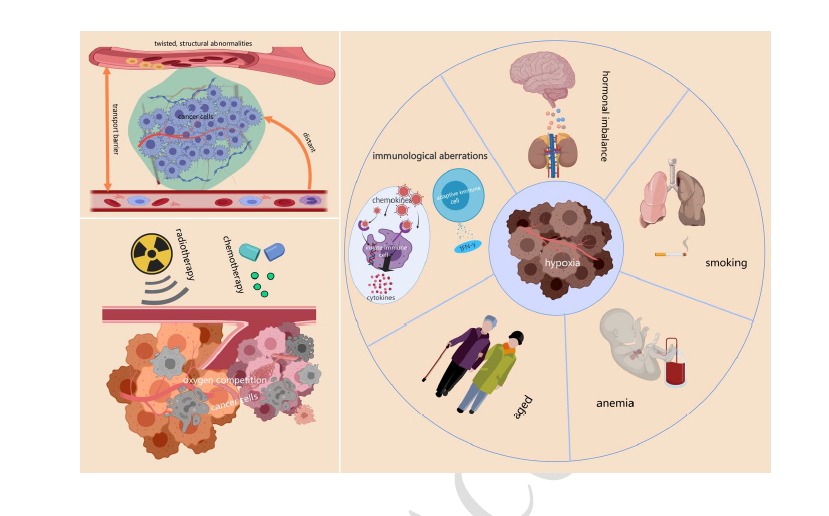Tumor hypoxia: Classification, detection, and its critical role in cancer progression
DOI:
https://doi.org/10.17305/bb.2025.12318Keywords:
Tumor, hypoxic, factors, classification, progressionAbstract
Hypoxia is a common feature of solid tumors and plays a critical role in cancer progression. A thorough understanding of tumor hypoxia is essential for gaining deeper insights into various aspects of cancer biology. This review examines the key factors contributing to tumor hypoxia, such as inadequate blood supply and oxygen delivery resulting from rapid tumor growth. We present a detailed classification of hypoxic regions and provide an overview of current methods used to identify these areas—from molecular techniques to imaging approaches—offering a comprehensive and multifaceted perspective. Additionally, we explore the mechanisms by which hypoxia drives tumor progression. Under low-oxygen conditions, tumor cells can alter their biological behavior, influencing processes such as cell proliferation, immune evasion, and the maintenance of tumor stem cells. By addressing these dimensions, we aim to enhance understanding of how hypoxia contributes to cancer development. Through this in-depth exploration, we hope this review will offer valuable insights to guide future research and clinical applications.
Citations
Downloads

Downloads
Published
Issue
Section
Categories
License
Copyright (c) 2025 Yan Zhao, Bing Zhong, Jing-Yi Cao, Qian Wang, Jie Liang, Ke Lu, Sheng-Ming Lu

This work is licensed under a Creative Commons Attribution 4.0 International License.









